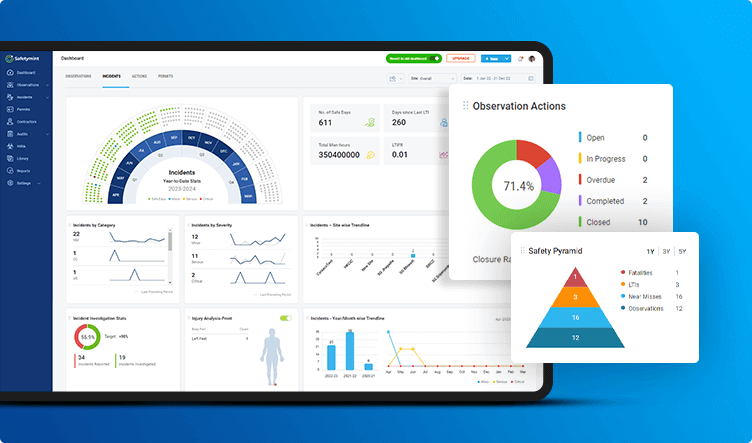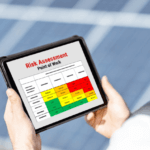
Elevating Safety: The 12 Key Elements of a Safety Management System
As a safety officer, your role in ensuring safety at workplace is vital. To excel, you need a strong Safety Management System (SMS). This article explores the 12 core SMS elements. From policies to performance, these essentials boost safety, cut risk, and build resilience. Discover how to elevate your safety program.
Here are the 12 Key Elements of a Safety Management System:
- Safety Policy and Objectives
- Safety Risk Management
- Safety Assurance
- Safety Promotion
- Safety Reporting and Investigation
- Safety Planning
- Safety Performance Monitoring
- Safety Management Documentation
- Safety Communication
- Safety Training and Education
- Safety Management Review
- Safety Management System Promotion
Now let’s learn more about each of them.

1. Safety Policy and Objectives:
This element involves crafting a comprehensive safety policy that outlines the organization’s commitment to safety. It should include clear safety objectives that provide a roadmap for achieving safety goals.
2. Safety Risk Management:
Safety risk management focuses on identifying, assessing, and mitigating safety risks associated with operational activities, processes, and equipment. By proactively addressing potential hazards, organizations can prevent accidents and incidents.
3. Safety Assurance:
Safety assurance ensures that safety measures are not only in place but also effective. It involves conducting safety audits, inspections, and performance monitoring to verify that safety protocols are consistently followed and improvements are made as needed.
4. Safety Promotion:
This element revolves around cultivating a strong safety culture within the organization. Through training, communication, and awareness programs, employees are encouraged to prioritize safety in their daily work, fostering a safer work environment.
5. Safety Reporting and Investigation:
Establishing robust reporting procedures for safety incidents, near misses, and accidents is crucial. These reports should be thoroughly investigated to uncover root causes and prevent future occurrences.
6. Safety Planning:
Safety planning encompasses the development of comprehensive safety plans and procedures. This includes creating emergency response plans, contingency plans, and protocols for addressing safety-related issues.
7. Safety Performance Monitoring:
Organizations need to continuously monitor safety performance metrics to identify trends and areas that require improvement. This data-driven approach helps in maintaining and enhancing safety standards. Related read: 15 Key Safety Metrics You Need to Track
8. Safety Management Documentation:
Maintaining detailed records, manuals, and documentation related to safety policies, procedures, and activities ensures accountability, transparency, and compliance with safety regulations.
9. Safety Communication:
Effective communication of safety-related information is vital at all levels of the organization. It includes sharing safety updates, best practices, and incident reports to keep everyone informed and engaged in safety efforts.
10. Safety Training and Education:
Providing comprehensive safety training and educational programs ensures that employees are well-informed about safety protocols, hazards, and compliance requirements, enhancing their ability to work safely.
11. Safety Management Review:
Regularly evaluating the SMS is essential to assess its effectiveness. By conducting reviews, organizations can identify strengths and weaknesses in their safety systems and make necessary improvements.
12. Safety Management System Promotion:
Promoting the SMS both internally and externally showcases the organization’s dedication to safety. It encourages participation and support from employees, stakeholders, and the wider community, reinforcing a culture of safety.

Safetymint for managing safety effectively:
With Safetymint’s user-friendly interface and robust features, including Incident Management, Permit to Work system, and Audits and Inspections Management, you can streamline safety processes, enhance efficiency, and proactively manage safety risks. Experience the power of Safetymint with our 14-day free trial and discover how we can transform your safety management practices.

Ramesh Nair is the Founder and Principal Partner of Niyati Technologies, the company behind Safetymint.
He’s a dedicated advocate for workplace safety. Ramesh firmly believes that every individual deserves to return home safely after a day’s work. Safetymint, the innovative safety management software, emerged from this conviction. It’s a platform designed to streamline safety management, empower safety professionals, and enhance safety in workplaces.
Through his blog, Ramesh shares insights, best practices, and innovative solutions for workplace safety. Visit his social media profiles to follow him for regular updates.



